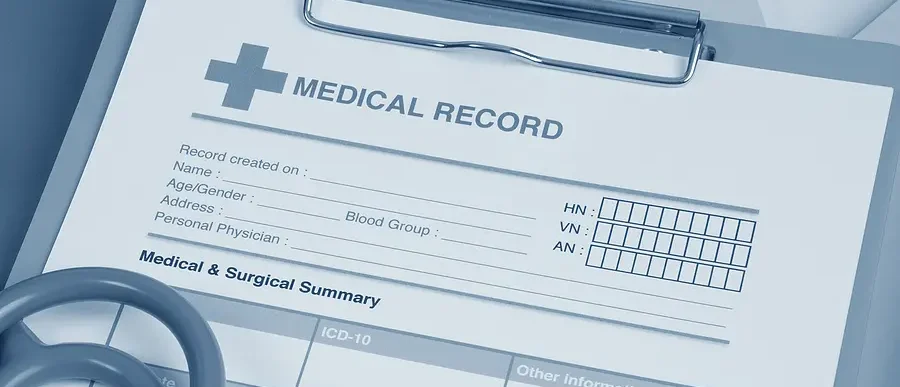
Today, effective management and disposal of healthcare documents are vital. They ensure efficiency, compliance, and data security in healthcare. Healthcare facilities manage vast amounts of sensitive data, including patient records and billing documents. As facilities grow, so do their document archives. That’s why it’s essential to regularly review, organize, and dispose of outdated or unnecessary information.
Proper disposal of healthcare documents saves space, and reduces the risk of data breaches and legal issues. In this blog, we’ll explore the need for safe disposal of healthcare documents. We’ll cover the types of documents that need it, and look at a few best practices for preserving important data and securely discarding irrelevant information.
Why Responsible Disposal is Vital
The healthcare industry is tightly regulated, especially when it comes to patient information. The Health Insurance Portability and Accountability Act (HIPAA) has strict guidelines for handling patient data in healthcare facilities. If you don’t dispose of healthcare documents correctly, you’re putting patient confidentiality at risk. That’s serious business. If sensitive information like medical records or insurance details get into the wrong hands, it can lead to identity theft or fraud, or the exposure private health conditions.
Improper disposal can do some serious damage to a healthcare facility’s reputation, too. If patients believe their information is mishandled, they’ll lose trust in their providers. This can lead to hefty fines. HIPAA violations can result in fines as small as $100 for small issues, with a maximum annual penalty of $1.5 million for repeated violations. Proper document disposal can protect facilities and patients. It also helps meet necessary healthcare regulations.
Types of Documents that Require Disposal
Healthcare facilities handle many types of documents. Some must be kept for legal reasons. Others can be safely discarded after a certain amount of time. Here are a few examples of everyday healthcare documents that often need to be disposed of:
- Outdated medical records: Patient records that have reached their required retention period and are no longer needed.
- Expired insurance forms: Insurance claims, forms, and documents that are no longer valid and won’t be needed in the future.
- Billing and payment records: Settled financial records, or those older than local laws allow.
- HR documents: Employee records that have reached their required retention period.
A well-organized document management system is key to the disposal process. Such systems allow healthcare facilities to more easily track document lifecycles. This helps ensure records are only kept for the necessary timeframes and disposed of securely when no longer needed.
Maintaining data fidelity is crucial with all documents to help ensure accurate and complete information. Digitizing paper documents via scanning, and implementing robust document management software, can further aid in categorizing records and identifying those eligible for disposal.
Best Practices for Disposal
The disposal process for healthcare documents depends on the format — physical or digital. With paper documents, shredding is the way to go for keeping things secure. Shredding makes sure sensitive information can’t be pieced together or accessed after it’s destroyed. Facilities can benefit from high-security shredders that meet the regulations for destroying sensitive documents.
When it comes to digital files, simply deleting them isn’t usually enough for proper disposal — they must be permanently erased. Specialized software can help ensure the files can’t be recovered. Encryption and secure digital storage solutions can also help protect digital records during the time they are retained.
Regardless of the file or record type, here are some tips you can use for proper document disposal:
Create a Disposal Plan
Every healthcare facility should have a disposal plan in place that outlines the specific types of documents eligible for disposal. The plan should also include the designated parties responsible for overseeing the process, and the methods for secure disposal. Some additional plan features include:
- Document review: Regularly review files to determine which records are eligible for disposal based on retention schedules.
- Assign responsibilities: Clearly designate who is responsible for the review and disposal of documents. This could be a compliance officer, health information manager, or another appointed staff member.
- Disposal methods: Outline specific disposal methods, like shredding for physical documents and digital erasure for electronic health records. If physical records need to be digitized before disposal, document scanning services can help convert paper files to a digital format, helping ensure important data is preserved.
Follow HIPAA Guidelines
Throughout the entire disposal process, healthcare facilities must strictly adhere to HIPAA guidelines. HIPAA requires healthcare organizations to protect patient information, which includes securely destroying records with personal health information (PHI). Always use HIPAA-compliant shredding and digital erasure software to help ensure patient data is protected.
Train Employees
Employee training is crucial. It ensures the proper handling and disposal of sensitive healthcare documents. All staff should learn the role they play in document management. Employees need to understand what documents to keep, when to get rid of them, and how to do it properly. This training should be updated regularly to stay current with any changes to laws or recommended procedures.
Use Secure Containers
Keep documents that need to be destroyed in locked bins or secure shredding carts. This helps avoid unauthorized users accessing the files. These containers are for storing documents temporarily until they’re disposed of. Using secure document containers, whether they’re your own or contracted through a storage solution provider, can significantly reduce the risk of data breaches at healthcare facilities before they’re destroyed.
Keep Records
In the healthcare industry, keeping a record of all disposed documents is almost always required. The record should include the disposal date, method, and the person responsible for disposal. The record serves as proof that you’re meeting all the necessary laws. Keeping these records helps the facility show it’s done its homework in the event of an audit.
When to Dispose of Documents
Document retention rules vary from one state to another, and they’re usually dependent upon the document type. Take HIPAA, for example — patient records must be kept for at least six years, no matter what. Some states have even longer rules. Different records, like financial documents and employee files, each have their own timelines.
To maintain compliance, healthcare facilities need to dispose of outdated documents on a regular basis. Setting up a routine check-in — maybe every quarter, bi-annually, or once per year — can help stop records from stacking up and getting out of hand. This way, documents get tossed in a timely and organized way.
Streamline Your Document Disposal with Record Nations
Documentation in healthcare doesn’t need to be a challenge. Creating a disposal plan that helps you adhere to the regulations of the industry is easy when you connect with a local provider through Record Nations. Find your disposal partner by calling us at (866) 385-3706 or filling out our form now. Our team will work with you to explore all your options and find the right fit for you.












